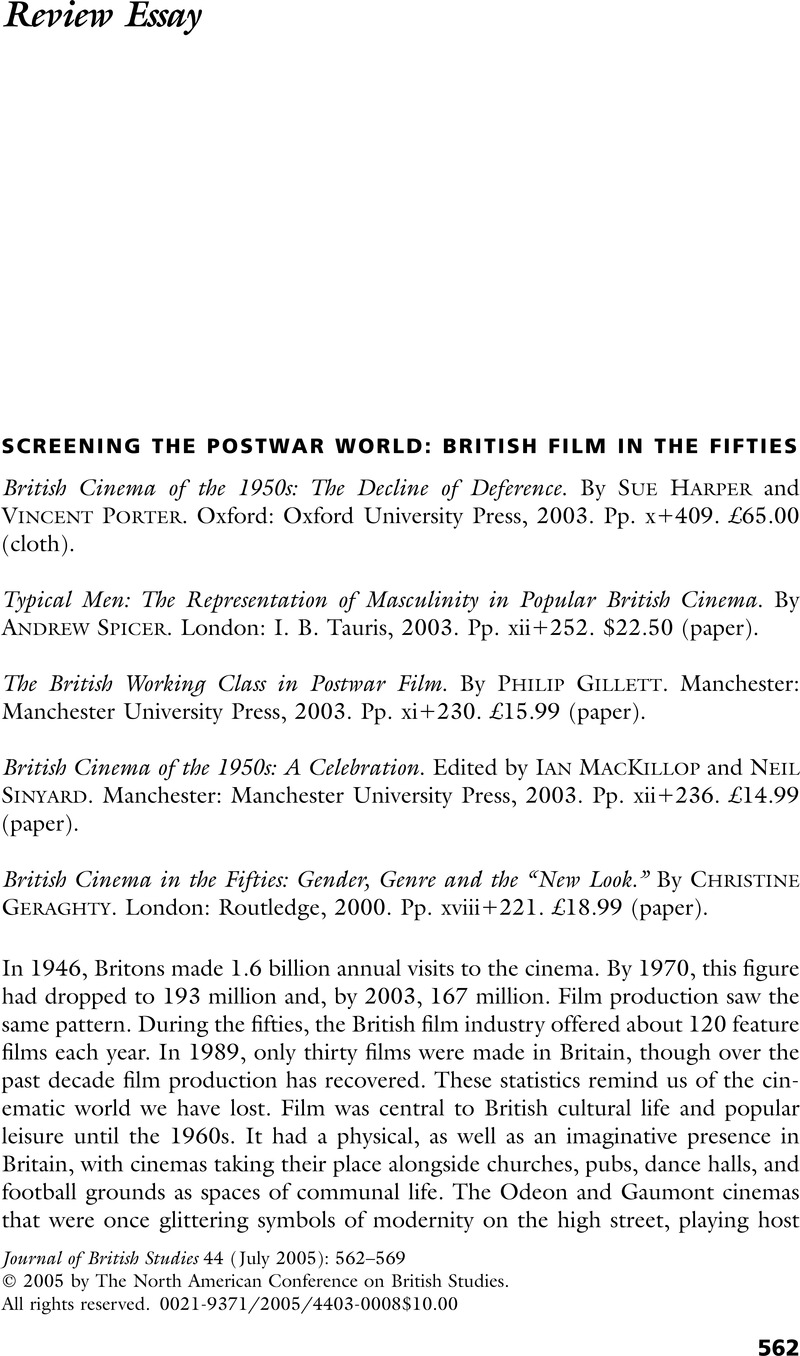No CrossRef data available.
Published online by Cambridge University Press: 21 December 2012

1 Birmingham Feminist History Group, “Feminism as Femininity in the Nineteen-Fifties?” Feminist Review, no. 3 (1979): 48–65Google Scholar; Segal, Lynne, ”Look Back in Anger: Men in the 1950s,” in Male Order: Unwrapping Masculinity, ed. Chapman, Rowena and Rutherford, Jonathan (London, 1988), 68–96Google Scholar, and Slow Motion (New Brunswick, NJ, 1990)Google Scholar; Mort, Frank, “Plus ça change? Commerce and Masculinity in the 1950s,” and “Montague Burton, the ‘Tailor of Taste,’” in Cultures of Consumption: Masculinities and Social Space in Late Twentieth-Century Britain (London, 1996), 128–44Google Scholar.
2 See Cronin, James, “Politics, Class Structure and the Enduring Weakness of British Social Democracy,” Journal of Social History 16, no. 3 (1982–83): 123–42CrossRefGoogle Scholar; Brooke, Stephen, “Gender and Working Class Identity in Britain during the 1950s,” Journal of Social History 34, no. 1 (2001): 773–95CrossRefGoogle ScholarPubMed; Waters, Chris, “‘Dark Strangers in Our Midst’: Discourses of Race and Nation in Britain, 1947–1963,” Journal of British Studies 36, no. 2 (1997): 208–38CrossRefGoogle Scholar; Webster, Wendy, Imagining Home (London, 1998)Google Scholar; Conekin, Becky, Mort, Frank, and Waters, Chris, eds., Moments of Modernity (London, 1999)Google Scholar.
3 Durgnat, Raymond, A Mirror for England: British Movies from Austerity to Affluence (London, 1970), 4Google Scholar.
4 Murphy, Robert, Realism and Tinsel: Cinema and Society in Britain, 1939–1948 (London, 1989)Google Scholar; Hill, John, Sex, Class and Realism: British Cinema, 1956–1963 (London, 1986)Google Scholar; Landy, Marcia, British Genres: Cinema and Society, 1930–1960 (Princeton, NJ, 1991)CrossRefGoogle Scholar; Stead, Peter, Film and the Working Class: The Feature Film in British and American Society (London, 1989)Google Scholar.
5 Durgnat, A Mirror for England, 5.
6 See Francis, Martin, “The Domestication of the Male? Recent Research on Nineteenth- and Twentieth-Century British Masculinity,” Historical Journal 45, no. 3 (2002): 637–52CrossRefGoogle Scholar.
7 A notable example is Ross, Kristin, Fast Cars, Clean Bodies: Decolonization and the Reordering of French Culture (Cambridge, MA, 1995)Google Scholar.
8 See also Richard Dyer, “White,” Screen 4 (Autumn 1988): 49–51; Webster, Wendy, “‘There’ll Always Be an England’: Representations of Colonial Wars and Immigration, 1948–1968,” Journal of British Studies 40, no. 4 (2001): 557–84CrossRefGoogle Scholar.